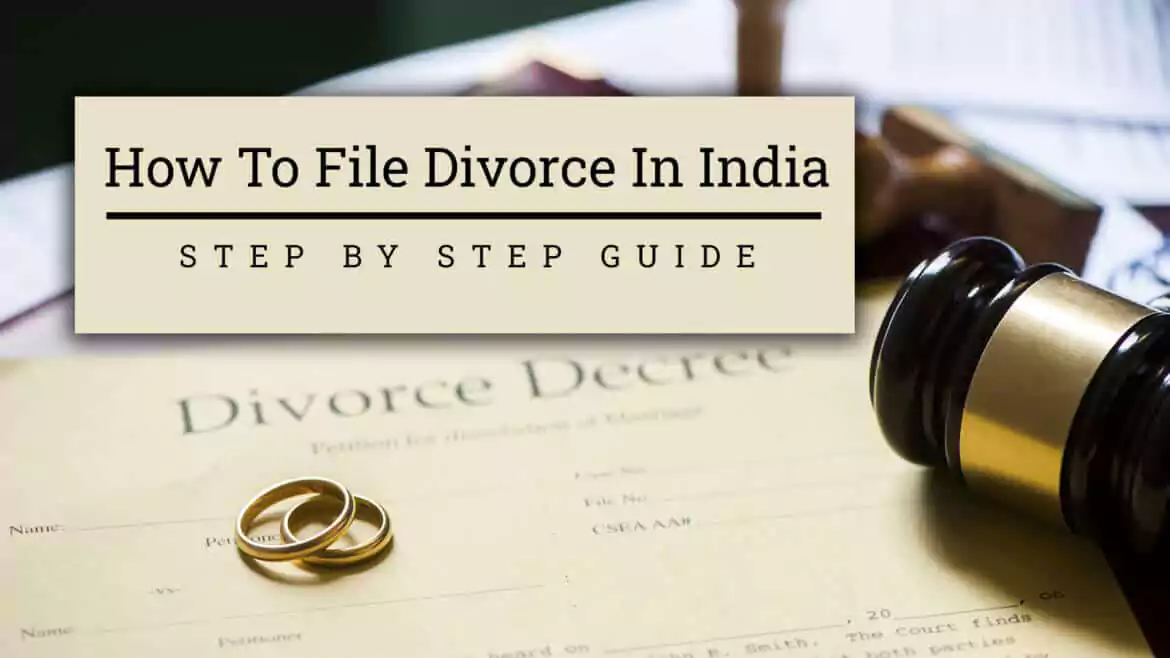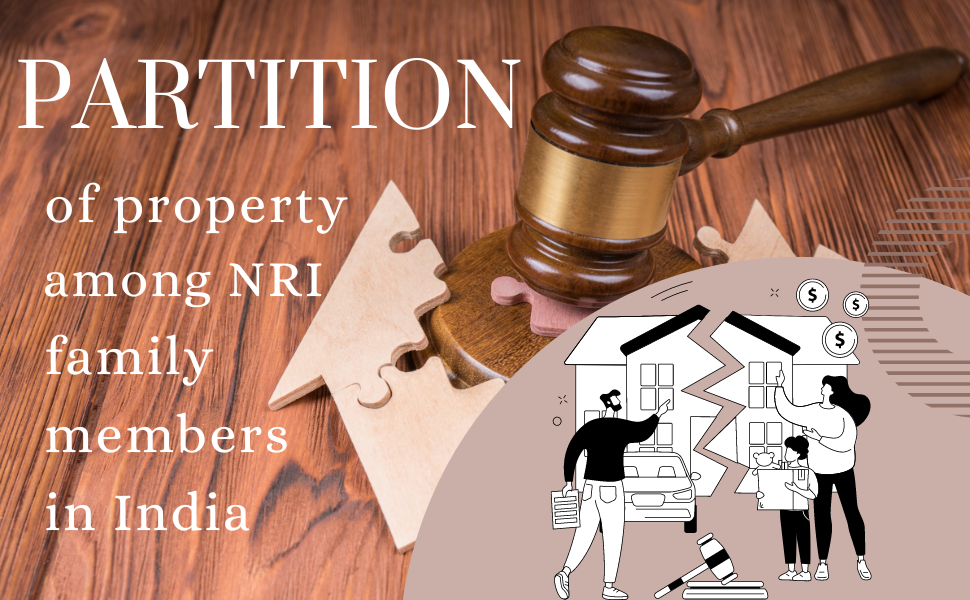We have hereby sought to elucidate on the various modalities pertaining to how to file a divorce in India for all such individuals who might find the information to be relevant. Before filling a divorce case you should be aware of legal grounds for divorce in india and with the updated legal terms.
The social fabric is subject to ceaseless change. The existent norms and considerations are continuously evolving over time. The radical changes in the conception of marriage serve as a prime instantiation of this contingency. Historically, marriage had claimed a sense of permanence, on account of the sanctity afforded to it, as a social institution. Practical consideration, over the years, has sought to effectuate a quintessential change in this regard with the introduction of divorce, as a viable option, to be considered as a necessary reform.
It is a feasible assumption that the ideals and aspirations of two individuals, associated through marriage, might not necessarily advance down the same path. To be blunt, marriage might not work out as expected. Divorce, as a process leading to the legal dissolution of marriage, exists to cater to this possibility. It affords a means to avoid conflict amongst the concerned individuals whilst concurrently serving to ensure that each individual has the scope to pursue their own dreams, and develop their life, and personality, in accordance with their ideals.
Divorce Petition – The Legal Nuances:
The procedure for a divorce begins with the filing of a divorce petition, compiled by either of the parties subject to the procedure and necessarily served upon the other party. A divorce petition can be mutual or contested. A divorce petition is considered to be mutual when the need for it is agreed upon by both the parties subject to the petition, i.e.; the husband and the wife. In the event of disagreement, on the part of either of the two concerned individuals, with respect to the need for a divorce, the divorce petition, if filed in the court, is considered to be a contested divorce petition.
The legal framework has distinctly demarcated the purview of law, and subsequently necessary formalities, pertaining to the two kinds of divorce petitions. Hereby, we have shortly enlisted the relevant differences –
- A mutual consent divorce petition is one that is filed jointly by the husband and the wife. A contested divorce petition is one that is filed by only one of the two parties subject to the petition. The petition does not have the consent of both the concerned parties.
- A mutual consent divorce petition is filed under Section 13B of the Hindu Marriage Act, 1955. A contested divorce petition is filed under Section 13 of the Hindu Marriage Act, 1955.
- A mutual consent divorce petition does not necessarily need to state any grounds prior to being filed. A contested divorce petition can be filed on the ground of issues such as desertion, cruelty, mental disorder, renunciation of the marriage, leprosy, conversion of religion, adultery, etc.
- The terms of the divorce agreement, in a mutual consent divorce, are arrived at by the husband and the wife, through amicable dialogue. A contested divorce petition usually necessitates the expertise of NRI divorce lawyers to arrive at the terms of the divorce agreement pertaining to maintenance, child custody, property, and the like.
Temporal Considerations:
The temporal considerations, pertaining to how to file a divorce in India, differ with respect to the nature of the divorce petition.
For a mutual consent divorce petition to assume legal validity post-completion, the procedure might take approximately six months. However, the law dictates that no such petition can be filed prior to the completion of twelve months from the date of legal registration of the marriage. Furthermore, the First and Second motions of the divorce petitions need to have a gap of six months in between. The court can, however, use its discretion to waive off this cooling period in certain cases. Thus, in the case of mutual consent divorce petitions, the time required usually ranges from 18 to 24 months.
The temporal considerations pertaining to how to file a divorce in India, in the case of contested divorce petitions, are significantly more drawn out. Owing to the various complications that usually characterize such cases, the procedure usually takes 3 to 5 years to arrive at a complete resolution. It some cases, owing to the possibility that either party can challenge the implementation of a passed decision in the High Court or the Supreme Court, the procedure might be further protracted.
Monetary Considerations:
The monetary considerations pertaining to how to file a divorce in India differ distinctly depending on a host of factors. Generally, mutual consent divorce petitions are less economically burdening as compared to contested divorce petitions. Mutual consent divorce petitions can be handled by a single common lawyer representing both the parties to the petition. Contested divorce petitions necessitate individual divorce lawyers for both the concerned parties with divorce law. The difference in time required for the resolution of the two types of divorce petitions also adds decisively to the incurred expenses.
At Rs.15 (Fifteen Indian Rupees), the court fee is the minimal expense in any divorce proceeding. The payment to be made to the lawyer constitutes the majority of the expense in any divorce petition. A private lawyer, based on his work experience and the relevant details pertaining to a specific case, might charge an amount between Rs.10,000 (Ten thousand Indian Rupees) to Rs.1,00,000 ( One lakh Indian Rupees). The payments can be calculated on the basis of each hearing, or as a yearly payment.
Women are entitled to free legal services by an advocate from the legal aid cell. They can also ask the court to have the expenses for the litigation covered by the other party to the petition, i.e.; the husband. The court however usually proffers an amount less than the entirety of the incurred expenses.
Necessary Documents:
With respect to the legalities pertaining to how to file a divorce in India, the following documents might assume necessity, given the specifics of the particular case –
- The Certificate of Marriage.
- Proof of Residence of both the husband and the wife.
- Professional details of both parties, and also details pertaining to their economic situation, e.g. – Income Tax statements.
- Relevant details pertaining to their family backgrounds.
- Evidence of separation between husband and wife for at least a year.
- Evidence of separation between husband and wife for at least a year.
- Other necessary documents might be relevant given the specifics of a particular case.
- Photographs of the marriage.
The Divorce Procedure – A Synopsis:
We have hereby provided a short synopsis of the procedure, pertaining to how to file a divorce in India, for both the possible types of divorce petitions.
> Mutual Consent Divorce Procedure In India:
The following procedural steps are involved in a mutual consent divorce petition –
- The joint filing of the divorce petition by the husband and the wife.
- The two parties appeared before the court to record their statements.
- Examination of the petition, and relevant documents, by the court, and also the possibility of reconciliation.
- Court order on the First Motion.
- A cooling-off phase of six months to facilitate the possibility of reconciliation.
- Filing of Second Motion posts the cooling-off phase.
- Implementation of the Divorce Petition – the Divorce is legally validated.
The First Motion in a mutual consent divorce petition involves the joint filing of the divorce petition, by the husband and the wife, in the relevant court. Following this, both the parties are required to appear in the court at an ordained date to record their statements and submit all such documents as might be deemed relevant to the case. The court, post examination of the petition, and the relevant specifics can pass any interim orders as might be deemed necessary. Following the order on the First Motion, the court proffers a cooling-off phase of six months to explore the possibility of a harmonious reconciliation. Post this time period, and within 18 months of the First Motion, the Second Motion is filed in the court. The court, once satisfied with the mutual consent, without coercion, on the part of both the parties to the petition, will then pass a Decree of Divorce, granting legal validity to the dissolution of the marriage.
> Contested Divorce Procedure In India:
The following procedural steps are involved in a contested divorce petition –
- Filing of the divorce petition by the husband or the wife.
- Issue of summons by the court, to the party in disagreement, for the presentation of their contention.
- Submission of all relevant documents, and evidence, by both parties.
- Attempts at a possible reconciliation post examination of the petition.
- Examination and cross-examination of the relevant documents, a record of events, and pertinent witnesses.
- The court hears the final arguments, in light of the evidence, proffered by the advocates for both parties to the petition.
- Ascertainment of the grounds of the divorce petition.
- Dissolution of marriage through a decree of divorce.
The First Motion includes the filing of the divorce petition by the concerned party, with a clear mention of the grounds for the filing of the same. This same has to be substantiated, with evidence, during the trial. Once the petition is filed, the court issues a summons to the individual mentioned in the petition, to provide their contention and reason for withholding consent to the aforementioned petition. Once both the parties have filed their respective petitions and submitted the relevant documents, the trial commences. During the duration of the trial, the court can pass any interim orders, as deemed necessary, such as those pertaining to child custody, and the like. The trial involves the examination, and cross-examination, of the documents, pertinent witnesses, and the parties to the petition, to ascertain the record of events as they have transpired, and also the validity of the grounds for the filing of the petition. The advocates for each of the parties present their final arguments to uphold the contentions of their respective clients. The court examines the entirety of the offered evidence, the testimony of the witnesses, and the final arguments. Once satisfied with the validity of the grounds for the filing of the petition, the court passes a decree of divorce to legally validate the dissolution of the marriage. Post this decree, both the parties are legally bound to abide by the terms of the divorce agreement set down in the divorce petition. In the case of contested divorce petitions, either of the parties can seek to challenge a decision, so implemented, in the High Court and the Supreme Court.
Divorce is not meant to be considered as an easy way out. Marriage entails a plethora of familial, as well as socioeconomic, considerations. The very same have to be maturely accounted for to ensure that neither party is unscrupulously burdened with responsibilities or expectations. Thus, it would be proper to consider divorce as the last alternative in a bid to avoid conflict and the possible further estrangement of relations.
 Law Credo
Law Credo






